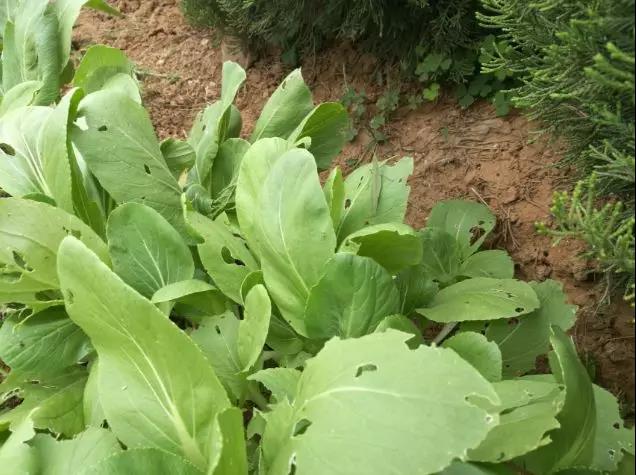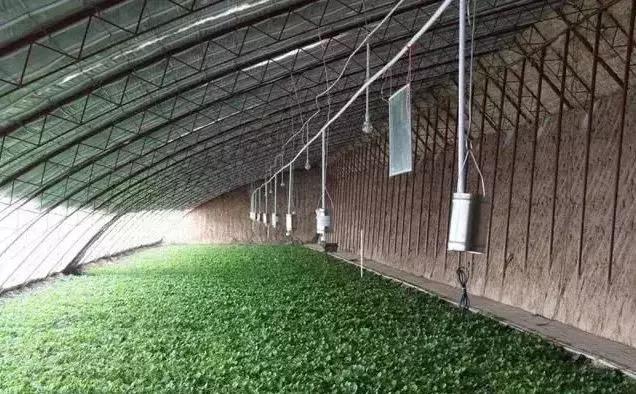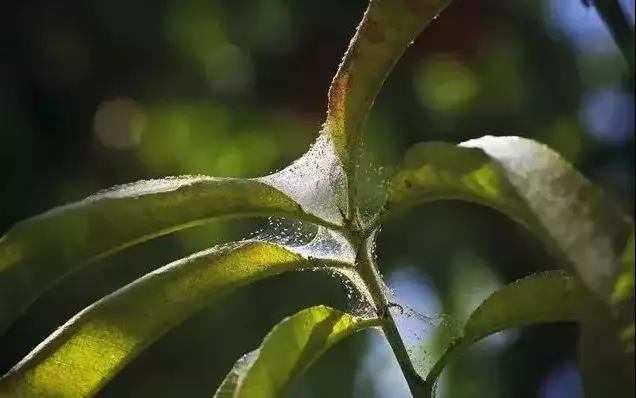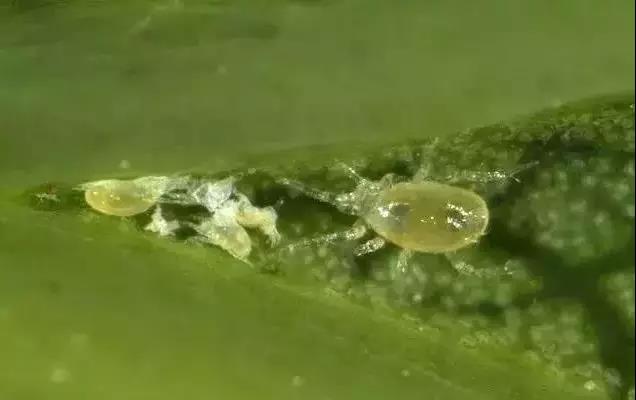In recent years, with the improvement of people's living standards, the demand for the diversity of vegetable products has been far from being met by the cultivation of open fields. Using greenhouses for vegetable cultivation, spring, summer, autumn and winter can be produced all year round, and more varieties of vegetable products can be obtained in different seasons.

However, the suitable living environment in the greenhouse has become a hotbed of pests. Especially when the pests are raging, many vegetable growers are faced with a dilemma: using more pesticides, affecting the quality and safety of agricultural products, using less pesticides, and pests affecting production.
With the deepening of understanding, it has been found that the green technology of pest control does not use chemical pesticides or pests.

Pest "corps"
With the development of greenhouse cultivation methods, the types of vegetables and production management conditions are constantly changing, resulting in an increase in the number of vegetable pests and diseases, and the structure of pests and diseases has also quietly changed. Some of the large pests that used to madly endanger vegetables were isolated by the relatively closed environment of the insect net and the greenhouse itself, and the threat was reduced. For some small and flexible pests, the physical defense lines such as insect nets and isolation doors are difficult to block. They unwittingly "infiltrate" into the shed through various means such as ventilation and air supply.
In the shed, open a blade in the growing season. If you see a dark red little bit crawling, it is a leafhopper. If you see a thin yellow strip, it is a hummer. If you see a few milky white flying insects Flying away, that is pink. They are the main members of the pest "corps" in the greenhouse.
Don't look at these pests, they are small, but they have strong reproductive ability and great harm. At around 25 °C, the leafhopper breeding generation only takes 5-7 days. In the greenhouse, the density of leafhoppers can be increased from 2 to 3 per leaf to hundreds of leaves per leaf in just two or three weeks. The whitefly is commonly known as the little white moth by the peasants. It usually lays more than 200 eggs. About 3 to 4 months, a pair of white mites can turn into hundreds of millions of white mites. Such a geometric progression is not difficult to imagine.
Pests and diseases are closely related. For example, whiteflies are also the "masters" of viral diseases, which can spread viruses through mouthparts. Therefore, in a pathogenic environment, once a whitefly bursts, it will lead to a pandemic of viral diseases.
It is undeniable that high-efficiency chemical pesticides can kill more than 90% of greenhouse pests, but with the super-fertility of these small pests, the remaining 10% can recover the original population in less than a week. Moreover, individuals who can escape from pesticide attack are individuals with a higher degree of resistance, and their offspring will inherit or even enhance this resistance. In addition, there is a layer of wax in the body of the whitefly, which is more resistant to pesticides. Every time the medication is used, it is actually helping the insect army to screen high-resistance elites.

Pest control "force"
Everything in the world has natural enemies, and these pests in the greenhouse are no exception. "Insect pest control" is a method of using parasitic and predatory insect natural enemies to eliminate pests. Taking Ye Wei as an example, there is a natural contradiction of the leafhopper - the predator.
However, the number of natural enemies in nature is limited, and may not be able to “automatically” appear in artificial environments such as greenhouses. How to make them used by humans, how to make the "force" of the pest control stationed in the greenhouse all year round to deal with pests? Researcher Xu Xuenong, director of the Biological Control Research Office of the Institute of Plant Protection of the Chinese Academy of Agricultural Sciences, told us that “Every kind of natural enemy insects that we may use often cost the research team for several years to carry out a large number of bioecological experiments indoors and in the field. Understand the characteristics of development, reproduction, survival, feeding habits and predation. Scientists based on the understanding of the biological learning of natural enemies, through a large number of feeding, reasonable release, "targeted" natural enemies in the greenhouses where pests occur, so that they can help Our little army. It is understood that there are currently more than 30 species of predatory cockroaches that have been commercialized internationally.
For example, the international natural enemy product used to control spider mites, Chilean plantation, was introduced to China in the 1970s. In recent years, the Predator Research Group of the Institute of Plant Protection of the Chinese Academy of Agricultural Sciences has independently developed the large-scale production and pure product collection technology of Chilean plantlets, and applied them in Beijing and other regions. Chilean plantlets are known for their strongest ability to prey on leafhoppers. Usually, Chilean small plantlets can prey on 5~30 heads of spider mites. Under normal circumstances, greenhouses are 3~6 square meters per square meter. 20 heads can effectively control leafhoppers. Using the greenhouse of Chilean plantlets, the leaf mites are low in damage, the plants are strong, the fruits and vegetables are good, and there are no abnormal fruits caused by phytotoxicity. However, there are certain restrictions on its application. Chile's Xiao Zhizhen has a special liking for Ye Hao. Apart from Ye Hao, he does not eat other foods. This aspect makes his population incapable of killing after the leafhopper is eliminated. It is difficult to establish a colony in a greenhouse. On the other hand, it is necessary to plant plant leafhoppers first to raise Chilean plantlets, which makes production more difficult, and the cost and price are relatively high.
Other predators, although their ability to prey on spider mites is slightly lower than that of Chilean pedicels, they also have their own advantages. In recent years, the Beijing Plant Protection Station and the Institute of Plant Protection of the Chinese Academy of Agricultural Sciences have selected two species of predatory cockroaches suitable for local use: the cockroach and the new cockroach, and independently developed The full-scale production of these two predatory cockroaches, including large-scale breeding, product collection, packaging, storage and so on. A variety of predatory mites are more widely used than Chilean plantlets and can be used to control thrips, leafhoppers and whiteflies. In terms of production, it is possible to use a whitefly or the like instead of the prey to be raised in large quantities at a low cost, and the production cost is relatively low. A variety of predatory cockroaches can be combined to make long and short, more effective than a single variety, long-term control of spider mites.
According to the National Natural Enemy Insects Science and Technology Innovation Alliance, the currently created natural enemy insect products have covered the main pest species of greenhouse crops such as tomato, cucumber, pepper, eggplant, melon, and strawberry.

Bugs "match"
At present, for the greenhouse vegetables, a series of core technologies for the control of natural enemies have been developed, including the control of whitefly by the bee larvae, the control of locusts by ladybugs, cockroaches, grasshoppers and cockroaches. The cockroach, the cucurbit, the cockroach, the cockroach, the cockroach, the cockroach, the cockroach, the cockroach, the cockroach, the cockroach, the cockroach, the cockroach
Compared with the use of chemical pesticides, the green technology of “worm control” can avoid or reduce the pesticide residues of agricultural products at the source of production, and has no pollution to the environment, so that pests are not easy to produce drug resistance, thus ensuring safe production of crops, improving quality and efficiency. The comprehensive benefits are significant.
It is good to treat insects with insects. Is the cost of insects high? It was learned from the strawberry planter Hu Tianfeng in Changfeng County, Anhui Province that the price of pesticides was slightly higher than that of pesticides, and 150,000 predatory mites per acre were needed. The cost of treating insects was about 100 yuan. This will ensure that there will be no pests within 2 months, and after 2 months, decide whether to continue to relax according to the specific circumstances. The quality of the strawberries produced in this way is higher and the price is higher after the market.
Fresh fruits such as strawberries, which are directly imported, have higher requirements in terms of quality and safety, and have higher production efficiency. They are the most common areas for the application of natural enemies. Researcher Xu Xuenong told us that although it is safe and effective to use natural enemy insects to control pests and diseases in greenhouses, it is still facing difficulties in large-scale promotion. First, the problem of conception, "worm control insects" has a time period, in the eyes of many farmers, it is not as fast as chemical pesticides, and the effect is direct. The second is the technical problem. In the greenhouse environment, the speed of pests is often very fast. Therefore, there are certain requirements on the number and timing of natural enemy insects. If it is not well controlled, it will affect the effect of pest control. The third is a number of technical coordination issues. Each natural enemy can only prevent and control a small number of pests. However, there are often multiple pests and diseases in the field. Only by establishing a number of measures to control and comprehensively control the pests and diseases can the real biological system be realized. Wide range of applications for prevention and control.
It can be seen that the micro-war between the greenhouse pests and the natural enemy insects is quite fierce. To fully overwhelm the rapidly expanding pest units, more high-tech prevention and control measures need to be added. At present, the prevention and control of natural enemies has been increasingly combined with other green prevention and control measures, such as the use of color-inducing techniques, sexual attraction techniques, and the use of entomogenous fungi such as pathogenic microorganisms such as Beauveria bassiana. This war has gradually become a full-scale, multi-level three-dimensional war. With the development of agricultural science and technology, we expect that the green technology of pest control will be more widely used in facility agriculture across the country, and bring healthier and safer green agricultural products.
Contact: Mr. Ma
Phone: +86-0374-5699688
Tel: +86-0374-5699688
Email: [email protected]
Add: Fine Chemical Industry Park, Jianan District, Xuchang, Henan, China